
Researchers have discovered an unexpected link between number theory in mathematics and genetics, providing critical insight into the nature of neutral mutations and the evolution of organisms. The team found the maximal robustness of mutations—mutations that can occur without changing an organism’s characteristics—is proportional to the logarithm of all possible sequences that map to a phenotype, with a correction provided by the sums-of-digits function from number theory.
An interdisciplinary team of mathematicians, engineers, physicists, and medical scientists has discovered a surprising connection between pure mathematics and genetics. This connection sheds light on the structure of neutral mutations and the evolution of organisms.
Number theory, the study of the properties of positive integers, is perhaps the purest form of mathematics. At first sight, it may seem far too abstract to apply to the natural world. In fact, the influential American number theorist Leonard Dickson wrote “Thank God that number theory is unsullied by any application.”
And yet, again and again, number theory finds unexpected applications in science and engineering, from leaf angles that (almost) universally follow the Fibonacci sequence, to modern encryption techniques based on factoring prime numbers. Now, researchers have demonstrated an unexpected link between number theory and evolutionary genetics.
Specifically, the team of researchers (from Oxford, Harvard, Cambridge, GUST, MIT, Imperial, and the Alan Turing Institute) have discovered a deep connection between the sums-of-digits function from number theory and a key quantity in genetics, the phenotype mutational robustness. This quality is defined as the average probability that a point mutation does not change a phenotype (a characteristic of an organism).
The discovery may have important implications for evolutionary genetics. Many genetic mutations are neutral, meaning that they can slowly accumulate over time without affecting the viability of the phenotype. These neutral mutations cause genome sequences to change at a steady rate over time. Because this rate is known, scientists can compare the percentage difference in the sequence between two organisms and infer when their latest common ancestor lived.
But the existence of these neutral mutations posed an important question: what fraction of mutations to a sequence are neutral? This property, called the phenotype mutational robustness, defines the average amount of mutations that can occur across all sequences without affecting the phenotype.
Professor Ard Louis from the University of Oxford, who led the study, said: “We have known for some time that many biological systems exhibit remarkably high phenotype robustness, without which evolution would not be possible. But we didn’t know what the absolute maximal robustness possible would be, or if there even was a maximum.”
It is precisely this question that the team has answered. They proved that the maximum robustness is proportional to the logarithm of the fraction of all possible sequences that map to a phenotype, with a correction which is given by the sums of digits function sk(n), defined as the sum of the digits of a natural number n in base k. For example, for n = 123 in base 10, the digit sum would be s10(123) = 1 + 2 + 3 = 6.
Another surprise was that the maximum robustness also turns out to be related to the famous Tagaki function, a bizarre function that is continuous everywhere, but differentiable nowhere. This fractal function is also called the blancmange curve, because it looks like the French dessert.
First author Dr. Vaibhav Mohanty (Harvard Medical School) added: “What is most surprising is that we found clear evidence in the mapping from sequences to RNA secondary structures that nature in some cases achieves the exact maximum robustness bound. It’s as if biology knows about the fractal sums-of-digits function.”
Professor Ard Louis added: “The beauty of number theory lies not only in the abstract relationships it uncovers between integers, but also in the deep mathematical structures it illuminates in our natural world. We believe that many intriguing new links between number theory and genetics will be found in the future.”
Reference: “Maximum mutational robustness in genotype–phenotype maps follows a self-similar blancmange-like curve” by Vaibhav Mohanty, Sam F. Greenbury, Tasmin Sarkany, Shyam Narayanan, Kamaludin Dingle, Sebastian E. Ahnert and Ard A. Louis, 26 July 2023, Journal of The Royal Society Interface.
DOI: 10.1098/rsif.2023.0169

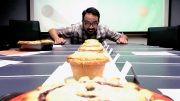

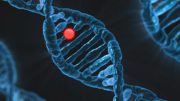
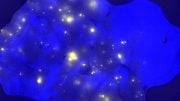
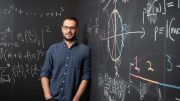
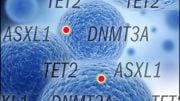
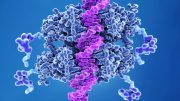
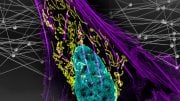
Maybe it’s because I’m a mathematician but I have never found that surprising at all. Physics is riddled with things that are described by vert consistently represented equations, therefore chemistry is as well, so when you combine a bunch of those together you’re going to end up with patterns and sometimes those patterns are going to involve integers.
Yeah, almost like it has an intelligent designer. Hmmm. Funny how that links up doesn’t it?
Yes excatly. Well said!
shouldn’t be a basic human need to strive to discover that the universe has a purpose and that it wasn’t some insane accident I sure as hell don’t want it to be meaningless what can be gained? I will never understand the mentality of an atheist lol
And yet it does not. All the more magnificent!
But it is – as we all know or should know – instead a natural, evolutionary product.
I am not particularly surprised by the link between pure mathematics and genetics as pure mathematics is abstract in nature but the abstractness can be linked to the genetics combination. From a macro level perspective, abstraction is apparent but with microscopic inspection, the pure math is discovered. Pure mathematic is an important application many areas of science.
The only thing that surprises me is that it took them that long to prove this. Anyone who has ever researched biology, chemistry or physics, kind of test that math seems to be essential to the core of it all.
Newsflash
God is good at math
😉
You because your
Please do note what the actual research say in chapter:
B. Critical Threshold for the Coarse-Graining of Phenotypes with High Robustness
“ We find, in fact, for any two pairs of phenotypes in the RNA12 GP map, none of the transition probabilities for these pairs fall within this expected range, and all of the ϕqp values are less than the theoretical lower bound required for the coarse-grained robustness to deviate from the maximum robustness no more than max(Δp, Δq). This makes sense when we consider the finding that for q ≠ p, in general ϕqp ≈ fq [18]. While mutation of a genotype that leads to no change in phenotype is highly likely (because of high robustness), mutation to a different phenotype is equivalent to randomly picking a new phenotype, with selection probability equal to the frequency of that phenotype. The number of edges connecting two random phenotypes is too low to pass the threshold required to obtain a coarse-grained robustness that is no less than the max possible robustness minus max(Δp, Δq).”
This actually tells exactly opposite than the article(s) claim. It tells that one phenotype has self-protecting mechanism(s) as per through this calculation finds, which aim to lock the phenotype to its existing robust form, not that it would evolve/drift away from its existing form (out from boundaries).
Literally this research suggests that this robustness only applies when phenotype does not transit to another (new) phenotype. Technically it says the robustness cannot be kept if evolving into new phenotype, for example to new species.
The way media presents this study’s finding is however interestingly biased.
Good point! The near neutral drift is of course only “robust” as long as the fitness doesn’t change.
The finding suggests that drift, not surprisingly, has evolved to operate on a non-random set of sequences. How that happened remains to be seen, but it is evolution as usual that sets the context.
That sounds like the theoretical equivalent of p-fishing.
Just FYI there’s a small typo: it’s Takagi, not Tagaki
There cannot be 2 substances with the same attribute for one would have to be the cause of the other which is absurd
‘ modern encryption techniques based on factoring prime numbers’?
Factoring primes by definition is the easiest thing to do. Perhaps you mean finding prime factor (of very large numbers), which is Sisyphean— depending on the size of your Sisypheaus
Today is my bird 79 find ways to heal and grumpiness .God knows best .please do not try to be Him .you could mess things up .think . Love ana Maroney .a nurse .cannot even heal my family .so be careful love 😘 ana
Go away, useless troll.
Does Field medal winner Vaughan Jones’s formula of the knot been an influence on mathematics and genetics?